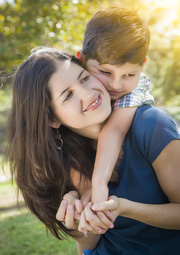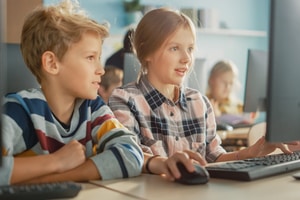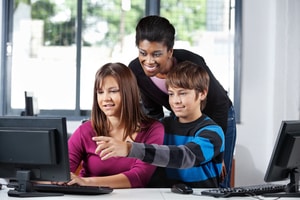A Year-Round Guide to Active and Healthy Living at Home
Maintaining a healthy, happy home is easy during the summer months when the days are long and the temperatures are high. As a parent, you can lean on active pastimes like soccer camp, baseball season, and camping to keep your kids entertained and active till the wee hours from June to September, too.
However, when the winter weather rolls around, you may find that your kid’s tempers start to flair from being stuck inside. This is only natural, as no child wants to spend their day cooped up inside — even if it is ten below freezing.
Get your kids out of the house and encourage them to lead an active and healthy lifestyle by finding family-friendly activities for every season. Try to feed them a seasonal, healthy diet to make the most of winter crops and support their growth.
Spring
Spring is the season for growth and renewal. It’s also the perfect time to start thinking about what you’ll grow in your garden this year. When the weather improves, sit down with your kids and plan your garden together. This will build a sense of excitement about planting crops and maintaining flower beds. You can also help your kids get into gardening by:
- Embracing quirky planting
- Giving them their own allotment space
- Planting produce with added sensory stimulation
- Composting and mulching together
Growing fruits and vegetables helps your family follow a healthier diet, too. When deciding on which crops to plant, consider opting for easy-to-grow superfoods like basil, oregano, garlic, and rosemary. These spices bring some serious flavor to the table and provide sensory stimulation for young kids who love to sniff the plants around your yard.
Summer
Summer is every child’s favorite season. School is out of session, the days are long enough to play till late, and they never have to worry about wearing coats or hats when playing outdoors with friends. The warmer months provide a perfect opportunity for you to bond with your child while enjoying the great outdoors, too.
If you happen to have a swimming pool, encourage your kids to take part in family-friendly pool games like:
- Water Aerobics: Jumping jacks and wall glides help build fitness while your kids have fun. Play your children’s favorite tracks as this will get them bopping and playing in no time.
- Marco Polo: A swimming pool classic, marco polo involves one swimmer closing their eyes, saying “Marco” while chasing to catch the others that respond with “Polo”. Just be sure to supervise lest someone runs into the side of the pool.
- Noodle Race: Using a noodle like a witch’s broom, race your kids to and fro across the pool to see who can do the most laps in a minute.
If you don’t have a pool, you can still make the most of the summer by playing fun outdoor games like pickleball. Pickleball is great for young kids, as it helps them develop motor skills and doesn’t require as much running as tennis or basketball.
Fall
Fall coincides with football, soccer, tennis, and golf season. This means many kids are already active enough from taking part in extracurricular activities. However, if you have a family of indoor kids, you need to take measures into your own hands to ensure they’re getting enough exercise.
Get the ball rolling by establishing a healthy routine with your child. This will teach them that taking care of their health is an essential part of everyday life. Start with simple core practices around the house like turning off the screens close to bedtime and taking the pets for a walk in the evenings.
Supercharge your family’s health in the fall by cashing in on seasonal eating. Many of the tastiest crops are ripe and ready for eating when the fall rolls around meaning you have no reason not to feed your family with fruits and veggies like pears, pumpkins, apples, and leafy greens.
Winter
Winter can be a tricky time for busy families. As a parent, it’s your job to make sure your household remains healthy and happy when the nights draw in and the temperatures fall. Do your best to embrace winter around the house and plan activities like:
- Building snowmen
- Active game nights
- Knitting
- Wreath making
- Family book club
These activities make the most of your time together and help fight off the winter blues. If you’re still concerned your kids aren’t active enough, consider signing up for a virtual gym membership with a company like Peloton, FitOn, or Nike Training Club. These subscription-based platforms are economical and offer on-demand training that can be scaled to suit the abilities of your whole family. There also ways to save on fitness equipment so that you can have the convenience of working out at home as a family.
Conclusion
Staying active at home throughout the seasons is key to raising a healthy, happy family. Form life-long habits by encouraging your kids to get involved with gardening and foreground the importance of exercise by signing up for virtual gym memberships. Feed your kids properly by cashing in on seasonal fall fruits and give your children plenty of attention by planning family-friendly pool games.
About the Author
 Katie Brenneman is a passionate writer specializing in education, mental health, family lifestyle and online safety. When she isn’t writing, you can find her with her nose buried in a book or hiking with her dog, Charlie. You can follow her on Twitter.
Katie Brenneman is a passionate writer specializing in education, mental health, family lifestyle and online safety. When she isn’t writing, you can find her with her nose buried in a book or hiking with her dog, Charlie. You can follow her on Twitter.







 Author bio: Cora Gold is the Editor-in-Chief of women’s lifestyle magazine,
Author bio: Cora Gold is the Editor-in-Chief of women’s lifestyle magazine, 



